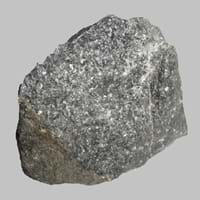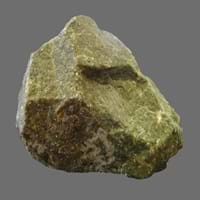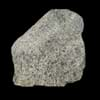Andesite and Dunite
Definition
Definition
Andesite is a dark, fine-grained, brown or greyish intermediate volcanic rock which is a commonly found in lava
Dunite is a green to brownish coarse-grained igneous rock mainly consisting of olivine
History
Origin
North America
New Zealand
Discoverer
Unknown
Ferdinand von Hochstetter
Etymology
From Andes mountains, where it is found in abundance
From the name of Dun Mountain, New Zealand, + -ite1
Class
Igneous Rocks
Igneous Rocks
Sub-Class
Durable Rock, Hard Rock
Durable Rock, Medium Hardness Rock
Family
Group
Volcanic
Plutonic
Other Categories
Fine Grained Rock, Opaque Rock
Coarse Grained Rock, Opaque Rock
Texture
Texture
Aphanitic to Porphyritic
Phaneritic
Color
Bluish - Grey, Grey, Pink, Yellow
Dark Greenish - Grey
Maintenance
More
Less
Durability
Durable
Durable
Water Resistant
No
Yes
Scratch Resistant
Yes
Yes
Stain Resistant
Yes
Yes
Wind Resistant
No
No
Acid Resistant
Yes
No
Appearance
Dull and Soft
Rough and Shiny
Uses
Architecture
Interior Uses
Decorative Aggregates, Floor Tiles, Homes, Interior Decoration, Kitchens
Decorative Aggregates, Interior Decoration
Exterior Uses
Office Buildings, Roof Tiles
As Building Stone, As Facing Stone, Garden Decoration, Paving Stone
Other Architectural Uses
Curbing
Curbing
Industry
Construction Industry
Cobblestones, Construction Aggregate, for Road Aggregate
As Dimension Stone, Cement Manufacture, Construction Aggregate, for Road Aggregate, Making natural cement, Raw material for the manufacture of mortar
Medical Industry
Not Yet Used
Not Yet Used
Antiquity Uses
Artifacts, Monuments, Sculpture, Small Figurines
Artifacts, Monuments, Sculpture, Small Figurines
Other Uses
Commercial Uses
Commemorative Tablets, Creating Artwork
Creating Artwork, Gemstone, Jewelry, Source of Chromite, Platinum, Nickel and Garnet, Source of Diamonds
Types
Types
Icelandite
Not Available
Features
Generally rough to touch, High silica content, Is one of the oldest rock
Constitutes upper part of the Earth's mantle, Generally rough to touch, Host rock for Diamond, Is one of the oldest rock
Archaeological Significance
Monuments
Used
Used
Famous Monuments
Middle of the Earth in Ecuador
Data Not Available
Sculpture
Used
Used
Famous Sculptures
Data Not Available
Data Not Available
Pictographs
Not Used
Used
Petroglyphs
Not Used
Used
Figurines
Used
Used
Fossils
Absent
Absent
Formation
Formation
Andesite is a fine-grained igneous rock that forms when the magma is erupted onto the surface and is crystallized quickly.
Dunite is a plutonic ultramafic igneous rock consisting almost m olivine. It can be formed in two ways.
Composition
Mineral Content
Amphibole, Apatite, Biotite, Feldspar, Garnet, Hornblade, Ilmenite, Magnetite, Plagioclase, Pyroxene, Zircon
Amphibole, Chromite, Garnet, Magnesium, Olivine, Phlogopite, Plagioclase, Pyroxene
Compound Content
Silicon Dioxide
Ca, CaO, Fe, Potassium, Silicon Dioxide, Sodium, Titanium Dioxide
Transformation
Metamorphism
Yes
Yes
Types of Metamorphism
Burial Metamorphism, Cataclastic Metamorphism, Contact Metamorphism, Hydrothermal Metamorphism, Impact Metamorphism, Regional Metamorphism
Burial Metamorphism, Cataclastic Metamorphism, Contact Metamorphism
Weathering
Yes
Yes
Types of Weathering
Biological Weathering, Chemical Weathering, Mechanical Weathering
Biological Weathering, Chemical Weathering, Mechanical Weathering
Erosion
Yes
Yes
Types of Erosion
Chemical Erosion, Coastal Erosion, Glacier Erosion
Coastal Erosion, Glacier Erosion, Water Erosion
Properties
Physical Properties
Hardness
7
3.5-4
Grain Size
Very fine-grained
Coarse Grained
Fracture
Uneven
Irregular
Streak
White
White
Porosity
Less Porous
Less Porous
Luster
Vitreous
Shiny
Compressive Strength
225.00 N/mm2
7
107.55 N/mm2
19
Cleavage
Not Available
Imperfect
Toughness
1.1
2.1
Specific Gravity
2.5-2.8
3-3.01
Transparency
Opaque
Translucent to Opaque
Density
2.11-2.36 g/cm3
2.84-2.85 g/cm3
Thermal Properties
Specific Heat Capacity
2.39 kJ/Kg K
2
1.25 kJ/Kg K
6
Resistance
Heat Resistant, Pressure Resistant, Wear Resistant
Heat Resistant, Pressure Resistant, Wear Resistant
Reserves
Deposits in Eastern Continents
Asia
India, Indonesia, Japan, Nepal, South Korea
China, India, Indonesia, Kazakhstan, Russia, South Korea, Thailand, Turkey
Africa
Egypt, Ethiopia, Morocco, Namibia, South Africa, Tanzania
Morocco, South Africa
Europe
Austria, Finland, Germany, Italy, Romania, Turkey, United Kingdom
Finland, France, Georgia, Germany, Great Britain, Italy, Kazakhstan, Netherlands, Norway, Spain, Switzerland, Venezuela
Others
Not Yet Found
Not Yet Found
Deposits in Western Continents
North America
Mexico, USA
Canada, USA
South America
Argentina, Bolivia, Chile, Colombia, Ecuador, Peru, Venezuela
Argentina, Brazil, Colombia, Ecuador, Venezuela
Deposits in Oceania Continent
Australia
New South Wales, New Zealand, Western Australia
New Zealand, Western Australia
All about Andesite and Dunite Properties
Know all about Andesite and Dunite properties here. All properties of rocks are important as they define the type of rock and its application. Andesite and Dunite belong to Igneous Rocks.Texture of Andesite is Aphanitic to Porphyritic whereas that of Dunite is Phaneritic. Andesite appears Dull and Soft and Dunite appears Rough and Shiny. The luster of Andesite is vitreous while that of Dunite is shiny. Andesite is available in bluish - grey, grey, pink, yellow colors whereas Dunite is available in dark greenish - grey colors. The commercial uses of Andesite are commemorative tablets, creating artwork and that of Dunite are creating artwork, gemstone, jewelry, source of chromite, platinum, nickel and garnet, source of diamonds.
|
||
|
||
|










